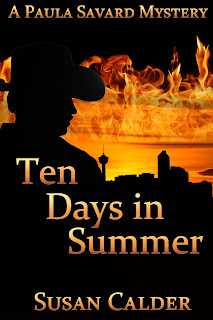A few days ago I attended the funeral of a very dear friend. She was 93 years old, and if I am lucky enough to reach such a great age myself, I would love to leave behind the same legacy. We met 25 years ago, and from that day on I have always wanted to be like her. She has always been my ultimate heroine.
Although there is always sadness when someone dies, the memories recalled and the stories exchanged sometimes offset the grief and this was certainly the case at Shirley's funeral.
Why, despite her death, is she my heroine? It's simple. She loved people so people loved her. Her default setting was to think about others, which meant that visiting her was always a joy. Yes, the hot drinks and chocolate biscuits (never plain) were welcome, as was the white wine (after 6 unless it was lunchtime), but the real pleasure was Shirley herself. She was so interested in everything, and who doesn't enjoy a conversation with someone who genuinely wants to know how you are feeling and what is happening in your life. Also, and this is perhaps the most important thing, she never complained. While she had a never-ending supply of sympathy for others, she rarely talked about herself, and if she did it was about happy things, not about the pacemaker she had to have fitted, or her failing eyesight.
Listening to her adult grandchildren recall their childhood visits and holidays with Nanna was heartwarming too. She has left them with so many wonderful memories. The annual family holidays in Greece with anything up to 20 adults and children participating sounded idyllic and yes, the white wine featured there as well. Then there were the bedtime stories, the walks in the woods and on the beach, the meals, the fun. Making sure that other people enjoyed themselves and had fun was one of Shirley's greatest gifts.
Her other great gift to her friends and family was her insistence on remaining independent. When her sight failed and she could no longer drive, she moved to a ground floor apartment in the centre of the village so she could continue to do her own shopping and meet friends for coffee or a meal without inconveniencing anyone. Then, at 90, too frail to continue alone, she sold up and moved herself into a care home, still in the centre of the village so she could carry on with her social life. This was despite the fact that both her daughters wanted her to live with them.
Once settled in the care home she had more visitors than anyone else, and those family holidays continued even though they were now a bit closer to home. Christmas and Easter and many weekends were spent with the family too, and in between she saw old friends and made many new friends.
I know she was supported by a strong faith, but only once in all the years I knew her did she mention it, and that was when she told me how much she was enjoying her Bible study class and learning how to meditate. She started these new activities when she was 91!
Finally, and the greatest proof of all that love is what everyone craves whether of the two-legged or four-legged variety, was her relationship with dogs. There were always dogs in her life. Her own when she was still able to care for them, and later other people's. For 8 years she provided daycare for one of my dogs while I was working and the intense love between them was mutual. In fact the last time I saw her was when I took my latest dog to see her. In my house the dog is not allowed upstairs (not always enforceable if the grandchildren are around!), and she is certainly not allowed on the beds. When we visited Shirley at the care home, however, they both snuggled up on the bed together without any reference to me whatsoever.
In addition to all of this, Shirley remained extremely pretty even in old age, and very elegant too. Despite losing most of her sight she continued to dress beautifully, and her hair and nails were always immaculate. This was also part of her attraction. As well as her loving kindness she made sure she was as good to look at as possible despite her extreme old age.
As the priest said at the funeral, 'everyone here now has a Shirley shaped hole in their lives, but it is a hole that is filled with loving and joyful memories.'
What a way to live, and what a way to go. No wonder she was and will remain my heroine.



















